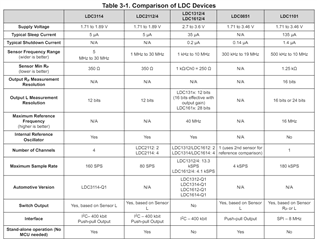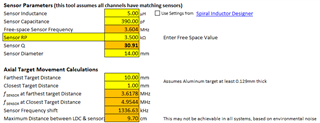Other Parts Discussed in Thread: LDC1612
Tool/software:
Hi BU,
I am John Tok, TI FAE based in Singapore who is currently supporting for ASMPT.
There is a question from customer regarding LDC1312 and LDC1612. By referring to LDC1312 datasheet, it mentions the conversion interval is configurable from 3.2 us to 26.2 ms, same goes to LDC1612. Hence, customer is asking what the difference in terms of resolution is corresponds to the specific conversion interval.
E.g. Is LCD1312 has better resolution than LCD1612 when both are configured to 3.2 us conversion interval? If yes, by how much?
Can you help to advise on how to differentiate in this scenario? Thanks.

Regards,
John Tok




